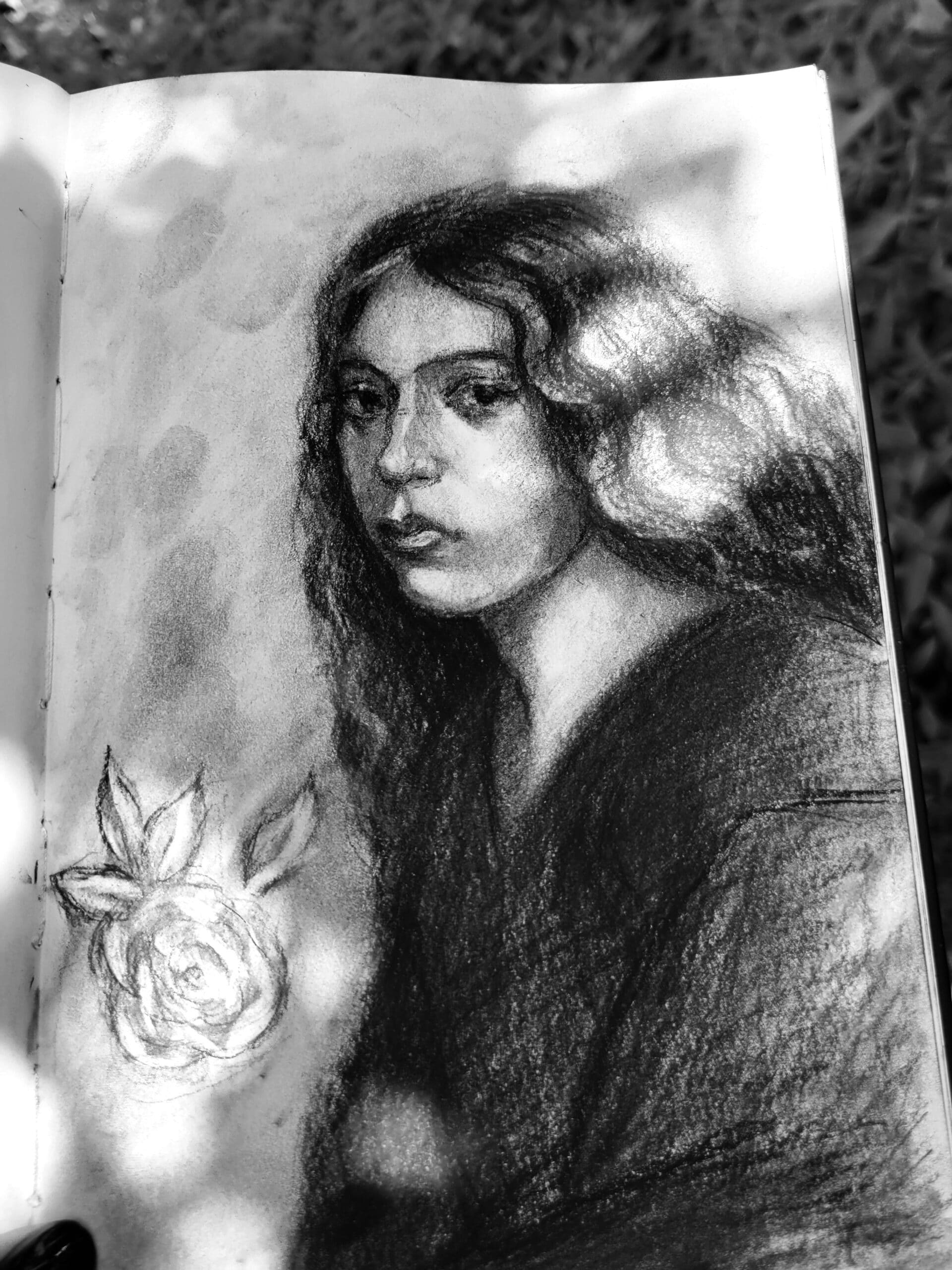Me at 15 years old, doing creative photography
Autism
I was diagnosed with Autism at age 12, following stressful, traumatic experiences in elementary school. The trauma led to severe anxiety, which developed into selective mutism. As an autistic person, I feel emotions deeply, which increases my chances of experiencing anxiety and mutism.
Autism Spectrum Disorder (ASD) is a neurological condition that affects how the brain processes information. It can alter communication, sensory perception, and social interactions, often making daily life a challenge. Autism is often genetic, with signs appearing early in life. Some people, like me, have heightened sensitivities—disliking bright lights or loud sounds—while others struggle with processing verbal information. These sensitivities can make certain environments overwhelming.
Autism: Growing Up and How It Affects Me Now
Autism has shaped many aspects of my life. While I am not defined by it, autism is a part of me, and I wouldn’t be the same without it. One of the biggest challenges I face is auditory processing disorder (APD). Although my hearing test results show that I have above-average hearing, I struggle to understand spoken words, especially when there’s background noise. This delay in processing leaves me feeling disconnected at times. By the time I’m ready to respond, the conversation has often moved on, and I feel left out.
Sensory overload has also been a major struggle for me. In middle and high school, I sometimes had to leave the classroom to avoid a meltdown triggered by overwhelming noise or bright lights. Meltdowns happen when sensory or emotional overloads make it impossible for me to function. Over time, I’ve learned to recognize the signs of an impending meltdown and find ways to decompress.
Emotional and Physical Exhaustion
Being autistic can be exhausting. My brain processes more information than the average person’s, which often leaves me drained after social interactions or daily activities. This mental exhaustion manifests physically as headaches, tension, and sore eyes. Research shows that autistic individuals process environmental stimuli differently, which can lead to quicker burnout.
Auditory Processing Disorder (APD)
APD has affected me deeply. Even though my hearing is above average, my brain struggles to filter out background noise, making it hard to focus on conversations. This constant sensory overload can be physically and mentally draining.
Mood Swings and Emotional Sensitivity
I experience emotions intensely. When I’m happy, sad, angry, or frustrated, I feel these emotions much more strongly than others might. This emotional sensitivity, common among autistic people, can be overwhelming, especially when paired with sensory overload. My daily mantra has become: “I respond, not react.”
Meltdowns and Shutdowns
When emotional or sensory overload becomes too much, I either have a meltdown or a shutdown. A meltdown is an intense nervous system response to overstimulation, while a shutdown is when my body or mind “freezes” in response to overwhelm. Over the years, I’ve learned how to manage these responses, practicing deep breathing and seeking quiet spaces when I sense one coming on.
Stimming as a Coping Mechanism
One of my primary coping mechanisms is stimming—repetitive actions that help regulate my nervous system. I have various stims, such as smelling my hands or arms and vocal stimming through sounds or repeating phrases. These actions bring me comfort and help me release pent-up tension.
Masking and Burnout
Another challenge has been masking—suppressing my natural behaviors to fit in. For a long time, I didn’t even realize I was doing it. Masking can help you blend in, but over time, it leads to burnout. Pretending to be someone else was exhausting and damaging to my mental and physical health. Now, I’m focused on unmasking and embracing my true self without worrying about societal expectations.
Selective Mutism
Selective Mutism (SM) is a severe anxiety disorder where a person cannot speak in certain social situations, despite being able to speak comfortably in others. It isn’t a choice—it’s a “freeze” response to fear. I struggled with SM from ages 12 to 14. No matter how much I wanted to, I couldn’t speak in public or at school. My body tensed up—my mouth, throat, chest, and stomach always felt tight. The anxiety didn’t leave until I got home, where I could finally relax.
Though it’s called “Selective Mutism,” I didn’t choose it. I wasn’t being silent on purpose; it felt like I physically couldn’t speak. The experience was painful and isolating. Some questioned my intelligence because I wasn’t speaking, which made me feel like I had lost a part of myself.
Overcoming Selective Mutism
High school was the turning point. As a freshman, I was still mute, but I knew I didn’t want to continue living that way. Slowly, I started to speak again, though it was incredibly difficult. Without the help of a therapist, I had to push through on my own. Year by year, I made progress, and by senior year, I was speaking more confidently. My resilience, along with the support of my family and kind teachers, helped me overcome SM. Overcoming challenges requires self-determination, and while outside support helps, real change had to come from within me.
Releasing Trauma and Tension
Years of anxiety, stress, and trauma left me with chronic pain and tension in my muscles. Because I couldn’t speak or relax during my school years, my jaw, chest, and other muscles were constantly tight. Now, I’m finally learning to release this pain. Through exercise, massages, meditation, and journaling, I’m healing both mentally and physically. I’m letting go of the trauma stored in my body for so long.
Loneliness and Isolation
Loneliness has been a constant companion, especially during my teenage years. Diagnosed with autism and SM at 12, I felt disconnected from my peers. I desperately wanted to communicate, but mutism kept me trapped. Even today, despite my intelligence and wisdom, I sometimes feel like I’m playing catch-up. But I’ve learned that it’s okay to be different and to embrace my unique journey.

Rebirth, Charcoal Drawing, 2023
Moving Forward
The journey to becoming my authentic self has been long and difficult, but I’m finally learning to embrace who I am. I no longer want to hide behind masks or live in fear. By sharing my experiences, I hope to inspire others who feel isolated or misunderstood. You are not alone. The world is vast, and there is space for you to grow and thrive. Now, at 24, I’m proud of how far I’ve come. I wish I could go back and hug my younger self—the scared, lonely girl—and tell her there’s nothing to fear. Life is precious, and there’s so much beauty to explore.

Recent Comments